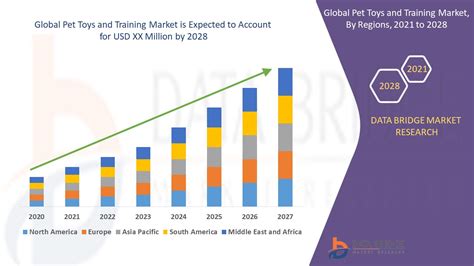Introduction
Pets have become an integral part of many families, and their well-being is a top priority for many owners. Pet toys and training are two important aspects of pet care, and significant research has been conducted in these areas to enhance the physical, cognitive, and emotional well-being of companion animals. This comprehensive article delves into the latest research on pet toys and training methods, providing insights into market trends, innovative technologies, and best practices for effective pet care.

Market Trends and Future Forecasts
The global pet toy market is projected to grow significantly in the coming years, reaching an estimated $20.9 billion by 2025, with a compound annual growth rate (CAGR) of 5.4%. This growth is attributed to factors such as rising pet ownership, increasing disposable income, and growing awareness of pet health and well-being. Interactive toys, chew toys, and treat dispensers are expected to drive market growth.
Toys for Physical and Mental Stimulation
Physical Stimulation
Pet toys play a crucial role in providing physical stimulation for pets. Exercise and play are essential for maintaining a healthy weight, promoting joint health, and preventing boredom. Toys such as balls, frisbees, and chase toys encourage pets to run, jump, and engage in physical activity.
Mental Stimulation
In addition to physical exercise, pets need mental stimulation to stay happy and healthy. Interactive toys that challenge their cognitive abilities promote learning, problem-solving, and prevent boredom. Puzzles, treat dispensers, and food puzzles are examples of toys that stimulate pets mentally.
Training Techniques for Effective Pet Care
Training is an essential aspect of responsible pet ownership. Proper training helps pets learn desired behaviors, build a strong bond with their owners, and prevent behavioral problems.
Positive Reinforcement Training
Positive reinforcement training is the most widely recommended training method for pets. It involves rewarding desired behaviors with treats, praise, or other positive reinforcements. This approach helps pets associate positive outcomes with desired actions, promoting motivation and learning.
Clicker Training
Clicker training is a specific type of positive reinforcement training that uses a clicker to mark the exact moment a desired behavior occurs. The clicker helps pets make a clear association between their behavior and the reward, resulting in faster learning and improved precision.
Innovative Technologies in Pet Care
The pet industry is constantly evolving, with innovative technologies emerging to enhance the care and well-being of companion animals.
Smart Toys
Smart toys incorporate advanced technology, such as sensors and artificial intelligence, to provide interactive and engaging experiences for pets. These toys can track activity levels, adjust to pet preferences, and even provide feedback to owners.
GPS Tracking Devices
GPS tracking devices allow pet owners to monitor their pets’ location in real-time. This technology is particularly useful for dogs that are prone to wandering or getting lost. GPS trackers can also provide peace of mind for owners who want to know where their pets are at all times.
Best Practices for Effective Pet Training
Consistency and Patience
Consistency is key in pet training. Establish clear rules and boundaries, and consistently enforce them. Patience is also essential, as pets learn at their own pace. Avoid punishment, as it can damage the bond between pet and owner.
Age-Appropriate Training
The age of the pet should be considered when selecting training methods. Puppies and kittens have different learning abilities and attention spans than older pets. Choose training techniques that are appropriate for the pet’s developmental stage.
Socialization
Socializing pets early on helps them develop positive interactions with other animals and humans. Socialization should include exposure to different environments, sounds, and smells.
Conclusion
Pet toys and training are essential aspects of pet care that promote physical, cognitive, and emotional well-being. Research in these areas has led to significant advancements in toys, training techniques, and technologies. By staying informed about the latest research and best practices, pet owners can provide their companions with a healthy, happy, and fulfilling life. As the pet industry continues to grow and evolve, we can expect to see even more innovative and effective products and services designed to enhance the bond between humans and their beloved animals.
Tables
| Type of Toy | Benefit | Examples |
|---|---|---|
| Physical Stimulation | Exercise, Joint Health | Balls, frisbees, chase toys |
| Mental Stimulation | Learning, Problem-Solving | Puzzles, treat dispensers, food puzzles |
| Training Aids | Positive Reinforcement, Precision | Treat dispensers, clickers |
| Location Tracking | Safety, Peace of Mind | GPS tracking devices, microchips |
| Training Technique | Method | Benefits | Drawbacks |
|---|---|---|---|
| Positive Reinforcement | Reward desired behaviors | Motivating, promotes bonding | Can be time-consuming |
| Clicker Training | Mark exact moments of desired behaviors | Fast learning, improved precision | Requires specialized equipment |
| Leash Training | Control in public settings | Reduces pulling, improves safety | Can be restrictive |
| Crate Training | Establish a safe, designated space | Reduces anxiety, promotes house training | Can be confining |
| Innovative Technology | Description | Benefit | Potential |
|---|---|---|---|
| Smart Toys | Sensors, AI, interactive experiences | Enhanced engagement, personalized care | Remote monitoring, automated play |
| GPS Tracking Devices | Real-time location monitoring | Peace of mind, safety | Increased pet recovery rate |
| Automated Feeders | Programmed food dispensing | Convenient, reduces overfeeding | May not be suitable for all pets |
| Pet Health Monitors | Track vital signs, activity levels | Early detection of health issues | Improved pet health outcomes |
| Market Insights | Figure | Source |
|---|---|---|
| Global Pet Toy Market Size | $13.5 billion (2020) | Statista |
| Projected Growth Rate | 5.4% (CAGR) | Allied Market Research |
| Largest Pet Toy Category | Interactive Toys | Grand View Research |





















